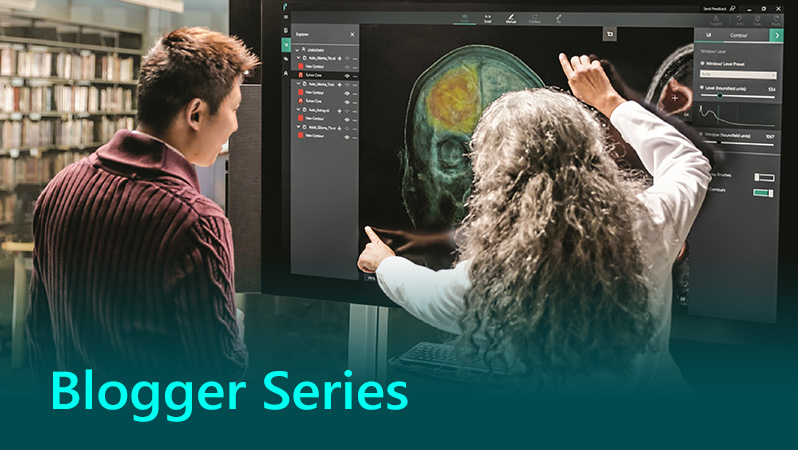
Time matters: 5 ways AI impacts healthcare
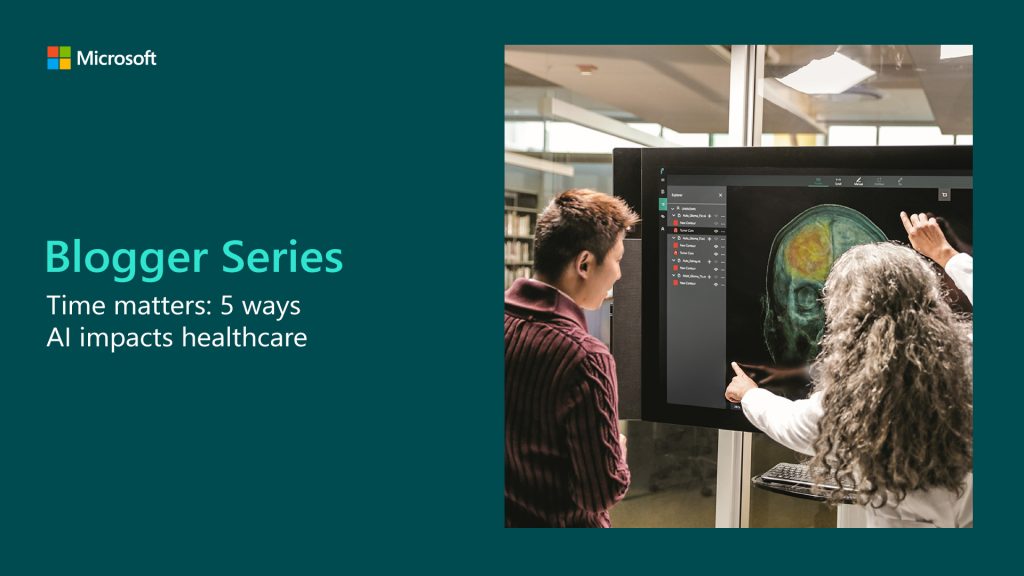
Today, there are five trends driving healthcare digital transformation. Rapidly emerging technology combined with pressure in security and compliance, pressure from the healthcare worker shortage, ageing populations and the new expectations for a personalised patient experience make for a future where the only way to stay agile and effective is to digitally transform.
In this blog, I explain some of these factors a bit more, as well as give you some examples from East Suffolk & North Essex NHS Foundation Trust (ESNEFT) that show how AI, data, and new technology are providing better patient outcomes. Furthermore, it’s also giving employees more time to focus on their core value driven work.
1. Rapidly emerging technology
70 percent of healthcare executives agree that keeping up with trending technologies, not only gives them a competitive advantage. It is also essential to their growth and keeping a positive customer experience.
With an explosive growth in data, healthcare executives are anticipating a positive transformative power from new technologies.
By 2020, an average of 1GB of health-related data will be created daily per person. Combine this with the move from on-premise systems to agile and interlinked systems of insight and engagement such as the cloud, and what do you get? More growth, more personalised healthcare experiences, and the agility to leverage new technology.
Now…
At ESNEFT, they’re employing the use of Thoughtonomy virtual workers to improve patient and employee’s experiences. They are one of the largest NHS organisation’s in the region. Digital transformation for them is a way to create more time for their employees. Thanks to their virtual workers, over 10,000 hours since July 2018 has been saved. It now reaches about 3500 hours per month. This time can be spent on more critical work and delivering better patient outcomes as a result.

Imagine if…
Your patients and their family members were more informed about their healthcare. They’d become more engaged in making decisions about care due to having convenient access to their medical information. They would also receive data-based guidance and personalised support. Not only from healthcare professionals, but chatbots, or automatic alerts from AI analysed data.
2. Pressure in security and compliance
The healthcare industry deals in a lot of personal data, often from vulnerable people. Currently, the global health industry loses $6.2 billion per year due to data breaches. This put patients at risk. It also strains tight budgets as healthcare organisations have to responds to threats – not to mention paying relevant fines. Most importantly, it impacts an organisation’s reputation and customer trust.

With data and AI, there’s an increase in expectation of precise and personalised healthcare. AI can have positive effects on patient care. Above all, we must be careful and ensure security and compliance is at the top of the agenda.
Organisations need to balance the line between risk and reward to ensure they stay compliant and secure without losing any of the advantages that AI and new technology bring. Look for solutions that are built with security in mind. Don’t forget to empower employees with training and knowledge on how to spot and handle cybersecurity or compliance issues.
3. Global shortage in healthcare workers
By 2030, providers will suffer from a projected shortage of 14 million workers worldwide. And we all know there’s already a shortage in the UK. AI can alleviate some of this pressure by optimising operations, leaving employees with more time to focus on delivering patient care.
Using data and analytics, organisations can correlate staffing needs with anticipated patient needs to better coordinate care. AI can be used to help practitioners to diagnose health issues by scanning data such as medical images, genomic data, and more. It can also be used at different points of a patient’s journey to optimise their experience. For example, chatbots at the start of the patient experience can help self-triage and direct them to the appropriate practitioner. Later on, data can be analysed to help predict issues or symptoms before they arise.
AI, machine learning, and data can also be used to manage appointments, prescriptions, health monitoring, and ongoing patient care and plan reminders.
Now…
ESNEFT’s virtual workers manage patient reminders, diagnostic test requests, and even invoice processing, among other day-to-day tasks. Not only has it freed up time for both operations and frontline staff, but it’s improved employee engagement. For example, they’ve seen a reduction in outpatients Do Not Attend (DNA) from 7.1 to 6.2.
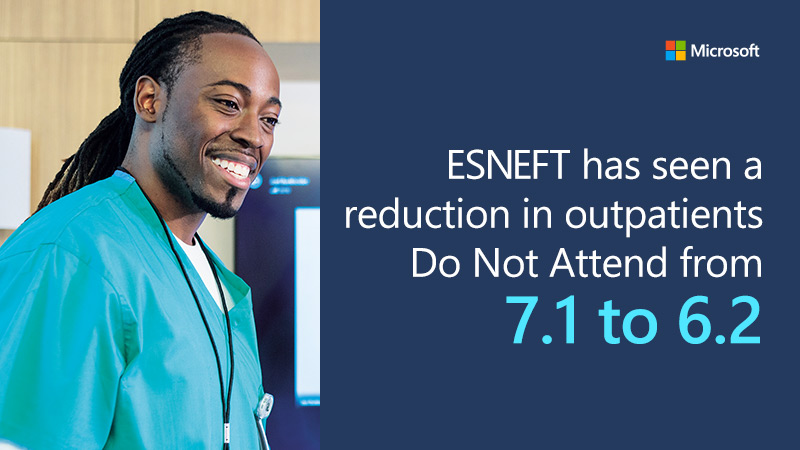
Imagine if…
Clinicians and administrations have the right information at the right time for treating patients. They can easily access and record a patient’s health information, coordinate care in real-time with other providers. All this can accelerate decision making and time-to-treatment based on AI and data insights.
4. Aging populations
Around the world, we are seeing stagnating birth rates and increasing life expectancies. By 2050, this will cause the number of people aged 60 or over to more than double – from 900 million to 2 billion.
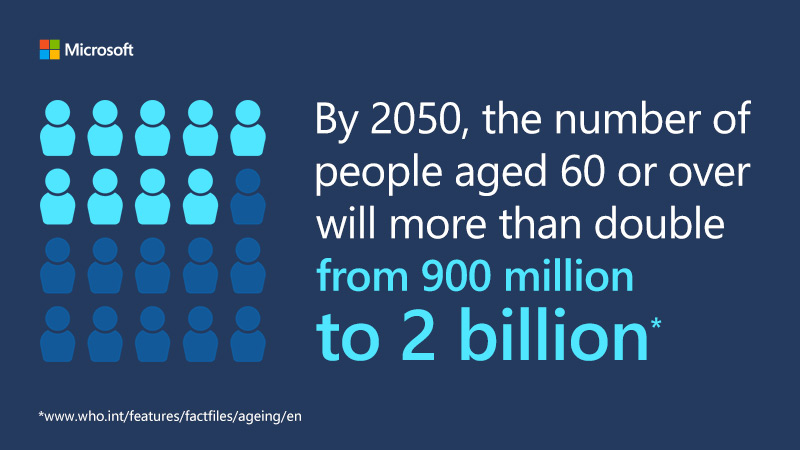
As this large percentage of our population ages, there will be an increased need for more care coverage to address growing eldercare needs. Technology has allowed people to be more empowered to understand their own health needs. AI will only make that easier.
AI can help us predict population health risks, such as those in the aging populations. This will lead to not only better individual care, but preventative care too. For example, falls are the most frequent and serious type of accident in people aged 65 and over in the UK. For people aged over 75, falls are the main cause of disability and the leading cause of death.
However, by wearing a device that collections data such as muscle mass, hydration levels, and more, it can send an alert to a healthcare practitioner before an incident, preventing any serious injury and providing appropriate support.
Now…
Virtual workers can manage patient information securely, making it easier to create referrals, share data, and track patient care. For ESNEFT, that means patients will receive high quality of care faster, and frontline workers have more time with them.
Imagine if…
Providers can analyse a patient’s healthcare data from many internal and external sources to identify disease patterns, develop innovative care delivery techniques, improve clinical outcomes, and operational efficiencies.
5. Increasing patient expectations
Digital transformation in other industries has led to increased customer expectations. It’s the same in the health care industry. Patients have higher expectations than ever towards their doctors, insurers, and the treatments they receive.
97 percent of patients now expect any health institution to have full access to their medical history. To live up to increased patient expectations and best serve patients, health industries will have to reconcile more extensive networks of data with increased security efforts.
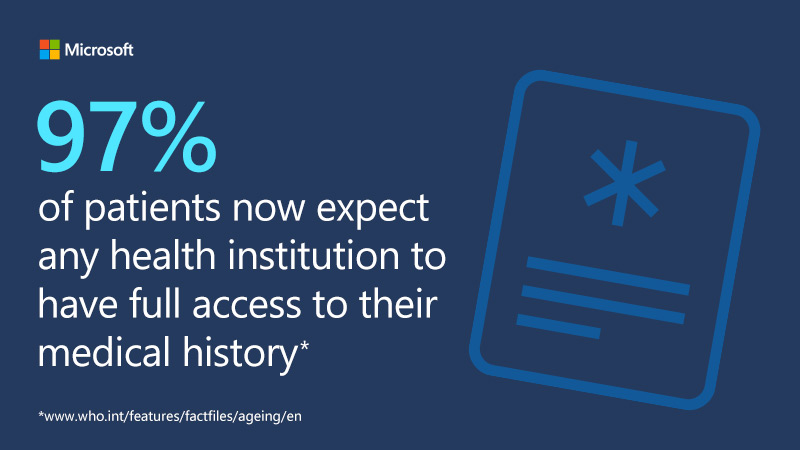
By harnessing data, you will get a complete overview of your patient. This means you can give personalised healthcare, long-term health plans, and use AI to help deliver this.
Now…
Thanks to virtual workers, ESNEFT have saved over 10,000 hours, repurposed 16,000 outpatient slots (saving £2.1 million), and even reduced the amount of agency staff. This equals, more time with patients, and money they can invest back to further improve patient care and outcomes. What’s more, they can keep growing their technology and introduce new tech such as chatbots to match increasing expectations.
Imagine if…
Health organisations can harness the power of data and precision medicine to manage population health and save lives. They collate data from different sources, such as medical devices, patient smart devices, AI, EMR, and community health data into one environment. This can improve treatments, identify at-risk patients, drive clinical innovation, and save lives.
Human +
At the end of the day – the use of new technology is all about one thing: making it easier for healthcare organisations to achieve their goals and improve the patient experience. AI does this by optimising operations, aiding us in diagnoses, and helping us provide personalised precision healthcare.
Find out more
Watch the session from Future Decoded: Defining an AI strategy for healthcare
[msce_cta layout=”image_center” align=”center” linktype=”blue” imageurl=”https://www.microsoft.com/en-gb/industry/blog/wp-content/uploads/sites/22/2019/01/Interior-view-of-the-Gherkin-building-in-London-e1549465950152.png” linkurl=”https://aka.ms/acceleratingai” linkscreenreadertext=”Download the report: Accelerating competitive advantage with AI” linktext=”Accelerating competitive advantage with AI” imageid=”7354″ ][/msce_cta]
Explore examples of how AI is transforming healthcare
Improving operational efficiency
About the author
 Stephen Docherty is a Microsoft Industry Executive for Health, engaging healthcare professionals and organisations and empowering their work through modern technology. Before joining Microsoft, he spent over 4 years as Chief Information Officer for South London and Maudsley NHS FT, bringing a different perspective to the NHS’s digital transformation – a time he describes as ‘fantastic’.
Stephen Docherty is a Microsoft Industry Executive for Health, engaging healthcare professionals and organisations and empowering their work through modern technology. Before joining Microsoft, he spent over 4 years as Chief Information Officer for South London and Maudsley NHS FT, bringing a different perspective to the NHS’s digital transformation – a time he describes as ‘fantastic’.




